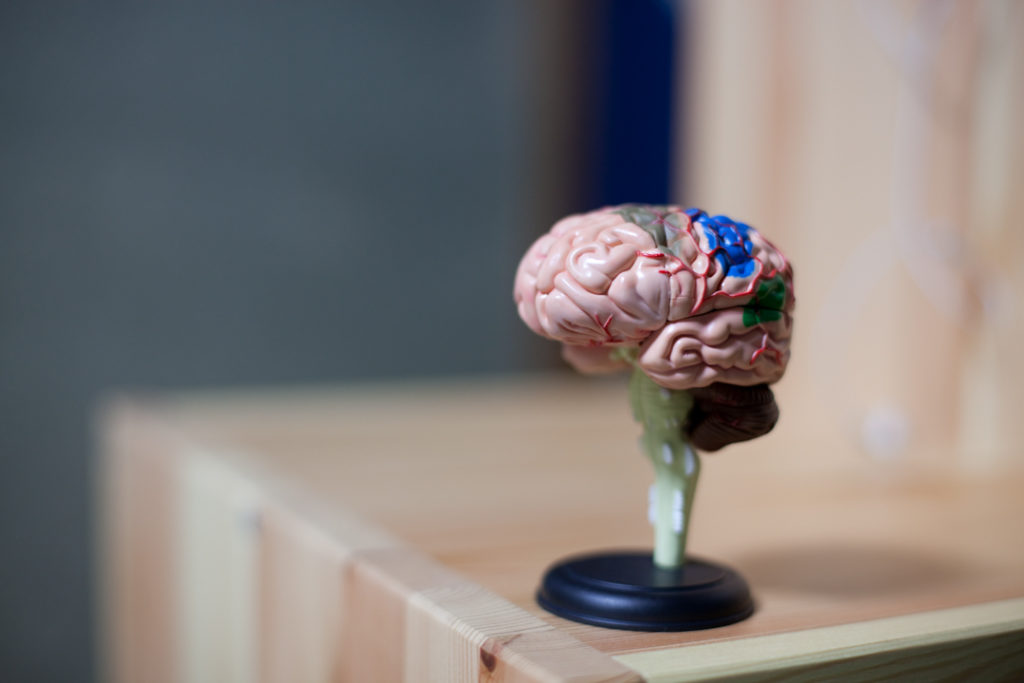
Youth mental health is of growing importance, with most lifelong disorders beginning in adolescence or young adulthood (Kessler et al. 2007; Patel et al. 2007) and with high prevalence of mental health problems in children and young people being reported (Polanczyk et al. 2015; Erskine et al. 2017; Erskine et al. 2014; Erskine et al. 2016). There is evidence suggesting rates are increasing, particularly in females (Collishaw 2014; Bor et al. 2014).
Services are rapidly adapting to meet this challenge (McGorry et al. 2013; Rickwood et al. 2014) and early intervention strategies being developed (Marwaha et al. 2016). One approach to this may be in exploring subtle transdiagnostic changes in mood (Broome, Saunders, et al. 2015), given the importance of anxiety and depression (Stockings et al. 2016), and in turn, whether imaging may help understand mechanisms of illness onset and provide clues as to opportunities for intervention (Broome, He, et al. 2015). This is the topic Fischer and colleagues address.
The Mental Elf has explored some related topics in detail recently, including prevention and early intervention for youth mental illness, gamified CBT to prevent depression in secondary school children, the impact of paternal and maternal depression on children, brief behavioural therapy for children and adolescents with anxiety and depression and use of mental health services to reduce adolescent depression.
In their introduction to the paper (Fischer et al. 2018), the authors state that 1 in 3 adolescent females in the US is diagnosed with major depressive disorder (MDD), and it is the leading cause of disability and second leading cause of death in this group. The study was designed to examine resilience in adolescent females at familial high-risk for depression. Resilience is described in the paper as:
adapting well in the face of significant sources of stress and bouncing back from difficult life experiences.
The investigators hypothesised that, using resting state functional connectivity analysis, ‘resilient’ females (those at high-risk but who didn’t develop MDD) would show adaptive compensatory changes including increased connectivity between the amygdala and prefrontal regions, and greater executive control network connectivity. They also hypothesised that the ‘converted’ group (high-risk, developed MDD) would show reduced executive control network connectivity, and greater salience network connectivity.

Evidence suggests that rates of mental illness are increasing, particularly in young women.
Methods
The study utilised a Stanford University cohort of female adolescents, with data collected from 1st October 2003 to 31st January 2017. Participants were followed up from the age of 9 to 18 and for a mean period of 7.6 years. Imaging data was acquired towards the end of the study, when the mean age of the participants was 18.9 years old.
At study entry, the cohort had no current or life time history of a psychiatric illness (as defined by Axis 1 DSM-IV diagnosis), and half the cohort had a maternal history of recurrent depression (Major Depressive Disorder, MDD), and the other half had no maternal history of Axis 1 diagnosis. Participants had been in the study typically for 6 years at the time of the imaging data collection, which 92 of the 190 participants took part in.
The authors state that they report findings on 65 of these:
- 20 participants were characterised as ‘converted’: high-risk and who had developed MDD during the course of the study, but which has subsequently resolved
- 20 participants were characterised as ‘resilient’: high-risk but who hadn’t developed MDD in the course of the study
- 25 participants were characterised as ‘controls’: low-risk and who didn’t develop any Axis 1 disorder.
Risk status was determined by presence of history of maternal depression.
Participants were assessed at 18-month intervals by either the Kiddie Schedule for Affective Disorders and Schizophrenia – Present and Lifetime version (K-SADS_PL), if under 18, or the Structured Clinical Interview for DSM (if older than 18). The Children’s Depression Inventory (CDI) and the Life Experiences Survey (LES) were also completed with participants.
The investigators carried out a resting state fMRI study of the participants, and a seed-based connectivity analysis based upon their hypotheses of networks which may be relevant to adolescent MDD. The seeds chosen, to access these networks, were the amygdala (limbic network), anterior insula (salience network), and dorsolateral prefrontal cortex (executive control network), and these networks and areas have been linked to mood instability and emotional regulation transdiagnostically (Broome et al, 2015).
Results
Demographics and Clinical
The participants did not differ in age between groups at the time of imaging; however, it is worth bearing in mind given the study’s purported focus on adolescence, that this mean age was between 18.75-18.99 years, suggesting that a substantial majority of the participants were adults at the time of data collection. There was no difference in ethnicity or household income. Interestingly, the high-risk groups had higher CDI scores at baseline than controls, and this was subsequently controlled for in the analysis. There was some use of psychotropic medication in the participants, but this did not differ between groups. However, reviewing Table 1 (Demographic Information and Clinical Data) the ‘Converted’ group had a substantial lifetime psychiatric history (12/20), excluding depression, compared to 4/20 in the ‘resilient’ group and 0/20 in the ‘control’ group (disorders having developed after study entry and during the follow-up), and hence this does generate a substantial difference between groups, other than the outcome of interest.
Imaging and Connectivity
Amygdala seed and limbic network: the resilient group had greater connectivity between the left amygdala and right superior frontal gyrus, the right amygdala and left orbitofrontal cortex, and bilateral inferior temporal gyri, compared to those who converted. Compared with controls, the resilient group had greater bilateral amygdala connectivity with left and right angular gyri.
Anterior insula seed and salience network: both high-risk groups had greater salience network connectivity than the control group. Those who converted to depression had greater intranetwork connectivity than the resilient or control networks. The resilient group had greater connectivity between the salience network and the superior frontal gyrus than those who converted.
Dorsolateral prefrontal cortex seed and executive control network: the resilient group had greater connectivity between the left dorsolateral prefrontal cortex and the left prefrontal gyrus, compared with the converted group. Compared with the control group, the resilient group had greater right dorsolateral prefrontal cortex activity with the right medial frontal gyrus.
Life events and connectivity: there was a correlation between positive life events and connectivity between right amygdala and the left orbitofrontal cortex in the resilient but not the converted participants.

There were substantial lifetime psychiatric history differences between the three groups in this study.
Conclusions
The authors conclude that the resilient group had potentially protective connectivity characteristics compared with the control and converted groups, with greater connectivity between the amygdala and prefrontal cortex, and an association between the amygdala and orbitofrontal connectivity and positive life events. They also demonstrated greater connectivity between regions of the executive control network. Further, both high-risk groups (‘converted’ and ‘resilient’) showed differences in the salience network compared to controls; greater intranetwork connectivity for those who converted, and greater connectivity with the frontal cortical regions in the resilient groups.
The authors suggest that:
These findings provide insights into brain circuitry that may be involved in resilience and, therefore, may inform more effective approaches to the prevention and treatment of adolescent-onset depression.

The authors say that their findings highlight functional neuroimaging biomarkers of resilience to adolescent depression that may be candidate targets for the prevention and treatment of depression. But do they?
Strengths and limitations
The authors include several limitations of their study: they note that imaging was only conducted at one time point, and hence findings could be a consequence of having had an episode of depression. They also note that the ‘resilient’ group may yet develop depression post-18 years of age. Finally, they note that only maternal history of depression was assessed; a wider family psychiatric history (both in terms of diagnosis and family members) was not undertaken.
After finishing reading the paper I was left with the title in my mind and trying to work out if the study was about adolescence, depression, or resilience. Taking these in turn may be a useful way of addressing some concerns and strengths of the study.
Adolescence
What worried me on my first read-through was that the mean age of participants when they underwent neuroimaging was almost 19 years of age, and hence traditionally, into adulthood. We know that such boundaries are artificial and indeed youth mental health services are being designed to bridge such unhelpful divides. However, the measure of resilience (which the connectivity study was interpreted as) occurred after the outcome of interest (the development of depression) had occurred. This is rather an unusual way to conduct a cohort study, and imaging is used after the disorder has or has not developed to infer a protective process that may have been present earlier in time. Hence, I think the study does talk about adolescent-onset depression (as that is the outcome under investigation in the cohort), but it needs to be kept in mind that the protective factors are examined post-outcome and, largely, post-adolescence and are assumed to be active earlier in development and in the development of disorder. This approach assumes that there may not have been developmental changes, psychologically and neurologically, during the period. The authors also point out that participants badged as ‘resilient’ may yet develop depression in adulthood, after the end of the study.
Resilience
For the investigators, resilience is cashed out as brain circuit connectivity and to think about risk as both family history and life events. For the latter this is measured by the LES but the former is rather narrowly construed. As the authors themselves note, family psychiatric history is limited purely to maternal history depression. This may be too narrow; children may inherit risk factors from the paternal line, and genetics do not map neatly onto diagnostic categories. Hence, family history of disorders other than, but including depression, could also suggest risk. Thus, the groupings of participants as ‘converters’ and resilient’ as outcomes of the high risk may not be wholly correct, and there may be appropriate ways to define risk status in the cohort, and because of this, we may get a limited or incorrect assessment of neural mechanisms of resilience.
Depression
The outcome of interest is depression having developed (and resolved) in adolescence but, as mentioned above, this study can’t inform us as to onsets later in life. Of more concern, and perhaps linked to the authors’ assumed close connection between maternal depression and adolescent-onset depression, is that there are a variety of wider mental health outcomes in the adolescents that aren’t discussed in detail. The ‘converted’ and ‘resilient’ groups differed markedly in psychiatric diagnoses, and the ‘control’ group were absent of Axis 1 disorders. This does create problems for the study as the groups differ by more than the exposure (maternal history of depression) and the outcome (depression) of interest. It may have been better to include controls who may have had non-depression diagnoses but no maternal family history (to avoid the controls being a ‘super-healthy’ group and differing from the other groups) or having a wider definition of outcome and include all Axis 1 diagnoses, rather than just depression.
There are a couple of general points to make. First, there were 190 participants in the study, of which 92 took part in the imaging component of the study. Of these, data on 65 is reported. It would be good to know how well the whole cohort represented an adolescent female population epidemiologically, and further, why data on just these 65 was presented and if they in turn differed from the whole cohort. It could also have been interesting to examine a low-risk group who did develop an Axis 1 Disorder. This would help dissect out further the relationship between risk and resilience.
Secondly, the study emphasises one element of depression; it having occurred in adolescence. However, one could similarly interpret the findings differently if we badged the ‘converters’ as ‘early onset’ (those who had developed depression in adolescence) or ‘good outcome’ (those who had had depression in adolescence but it had resolved) or as ‘multiple morbidity’ (the converters tended to have additional psychiatric diagnosis), or indeed in terms of severity, duration, polarity, treatment-responsiveness, functional impairment etc. Given this, it is hard to see that the neural markers which correlate with the groups may be specific to onset of depression or resilience, and could equally mark out other outcomes or processes.
There are many strengths of the paper: the importance and novelty of the study, the well-characterised sample, the longitudinal follow-up throughout adolescence, and the imaging methodology.

The limitations of this research prevent us from being sure that the neural markers which correlate with the groups are specific to onset of depression or resilience.
Implications for practice
The authors suggest that the regions that they have identified as being important in resilience to adolescent-onset depression are implicated in explicit and voluntary emotion regulation, including reappraisal and impulse control and hence the ‘resilient’ group may have greater ‘top-down’ control. Such processes may be enhanced by psychotherapy, SSRIs and positive life experiences via their effect on the executive control network connectivity. These suggested interventions aren’t in themselves novel, but the paper does suggest a mechanism by which they may work and allows an experimental medicine paradigm to be developed whereby new interventions could be trialled against fMRI markers of executive network connectivity.

Could new depression treatments be trialled against fMRI markers of executive network connectivity?
Conflicts of interest
None.
Primary paper
Fischer AS, Camacho MC, Ho TC, Whitfield-Gabrieli S, Gotlib IH. (2018) Neural Markers of Resilience in Adolescent Females at Familial Risk for Major Depressive Disorder. JAMA Psychiatry. Published online March 21, 2018. doi:10.1001/jamapsychiatry.2017.4516
Other references
Bor, W. et al., 2014. Are child and adolescent mental health problems increasing in the 21st century? A systematic review. Australian & New Zealand Journal of Psychiatry, 48(7), pp.606–616.
Broome, M.R., He, Z., et al., 2015. Neurobiological and behavioural studies of affective instability in clinical populations: a systematic review. Neuroscience and Biobehavioral Reviews, pp.1–36.
Broome, M.R., Saunders, K.E.A., et al., 2015. Mood instability: significance, definition and measurement. The British Journal of Psychiatry, 207(4), pp.283–285.
Collishaw, S., 2014. Annual Research Review: Secular trends in child and adolescent mental health. Journal of Child Psychology and Psychiatry, 56(3), pp.370–393.
Erskine, H.E. et al., 2014. A heavy burden on young minds: the global burden of mental and substance use disorders in children and youth. Psychological Medicine, 45(07), pp.1551–1563.
Erskine, H.E. et al., 2017. The global coverage of prevalence data for mental disorders in children and adolescents. Epidemiology and Psychiatric Sciences, 26(4), pp.395–402.
Erskine, H.E. et al., 2016. The global coverage of prevalence data for mental disorders in children and adolescents. Epidemiology and Psychiatric Sciences, 26(04), pp.395–402.
Kessler, R.C. et al., 2007. Age of onset of mental disorders: a review of recent literature. Current Opinion in Psychiatry, 20(4), pp.359–364.
Marwaha, S. et al., 2016. Fifteen years on – early intervention for a new generation. The British Journal of Psychiatry, 209(3), pp.186–188.
McGorry, P., Bates, T. & Birchwood, M., 2013. Designing youth mental health services for the 21st century: examples from Australia, Ireland and the UK. The British Journal of Psychiatry, 202(s54), pp.s30–s35.
Patel, V. et al., 2007. Mental health of young people: a global public-health challenge. The Lancet, 369(9569), pp.1302–1313.
Polanczyk, G.V. et al., 2015. Annual Research Review: A meta-analysis of the worldwide prevalence of mental disorders in children and adolescents. Journal of Child Psychology and Psychiatry, 56(3), pp.345–365.
Rickwood, D.J. et al., 2014. headspace — Australia’s innovation in youth mental health: who are the clients and why are they presenting? The Medical Journal of Australia, 200(2), pp.108–111.
Stockings, E.A. et al., 2016. Preventing depression and anxiety in young people: a review of the joint efficacy of universal, selective and indicated prevention. Psychological Medicine, 46(1), pp.11–26.
Photo credits
- Photo by Jordi Zamora on Unsplash
- Photo by Melissa Askew on Unsplash
- Photo by inbal marilli on Unsplash
- Photo by rymtok on Foter.com / CC BY-NC-SA

[…] Resilience to depression: neural markers in adolescent at-risk females […]
[…] we study the biological approach, we look at the influence of biological structures on behaviour. This study looks at evidence linking particular areas of the brain to resilience against depression. The […]